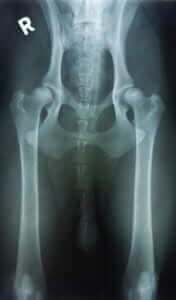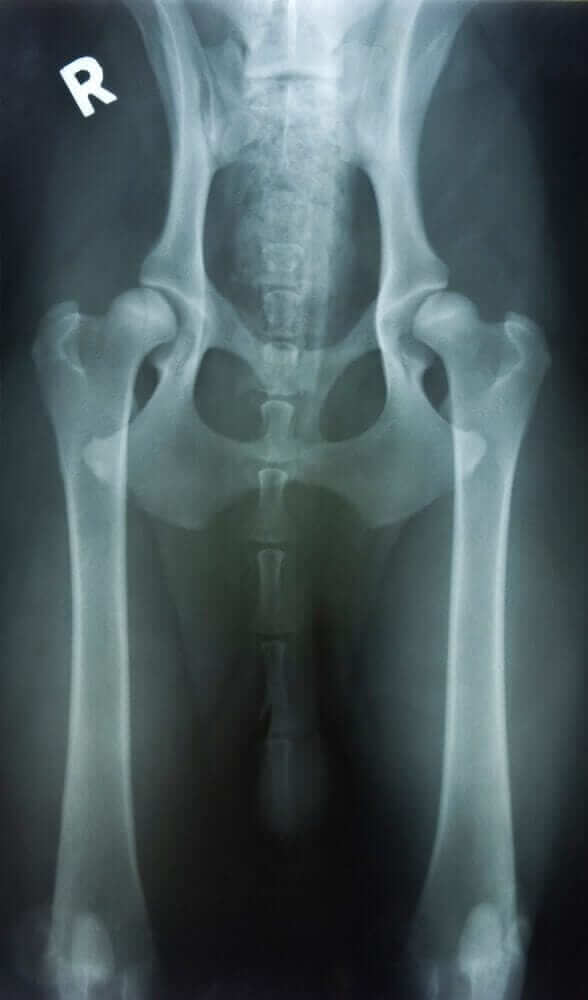What is the best joint supplement for my dog? That is a very common question that I would entertain from my veterinary clients over the years. When it comes to a joint supplement, you need to look at the purpose or goals for the product and the ingredients. Glucosamine and chondroitin sulfate are very common ingredients for canine joint support. However, is it possible to do better? Can you provide joint support for your dog, but also joint pain relief and inflammation support at the same time? Can you do better than the typical glucosamine based joint supplement for dogs? It depends on your goals.
Pain relief for dogs and pets is the number one goal for most owners in dogs with joint pain. Dog owners are seeking a joint supplement that be may not be suited for their dog’s condition. Sadly, by the time that we are seeking solutions, the problem has often progressed to a significant level. Canine or dog arthritis  is a common problem impacting pets of all ages. The condition of arthritis in dogs is not too dissimilar from that in people. Finding joint pain relief for your dog can be a challenging task. The solution revolves around what stage your dog’s condition is in and what your goals are for providing joint support and pain relief. Is a joint supplement all that is needed or do you need to take it a step further?
is a common problem impacting pets of all ages. The condition of arthritis in dogs is not too dissimilar from that in people. Finding joint pain relief for your dog can be a challenging task. The solution revolves around what stage your dog’s condition is in and what your goals are for providing joint support and pain relief. Is a joint supplement all that is needed or do you need to take it a step further?
What is arthritis in dogs?
Arthritis, or more correctly osteoarthritis, is a degenerative condition of the joint. This condition usually develops over time and is age related, but in some it happens earlier in life. In those dogs, it can be related to genetic conditions but can also be related to bone fractures or trauma.
Osteoarthritis in dogs is a situation in which the cartilage covering the ends of the bones in the joints breaks down. This process of degeneration is a result of inflammation. As the cartilage degenerates and erodes, the surrounding bone and joint capsule become inflamed. This creates pain and discomfort your pet or dog. Over more time, the bone begins to change in shape and form with some bone spurs created. The range of motion can also become limited. In the end, most dogs will experience marked joint pain and reduced function of the joint. This impacts their quality of life significantly.
Arthritis is a degenerative condition that usually occurs over time as the pet or dog ages. It is similar to a snowball rolling down a hill. Once it gets started, it is often hard to stop. Ideally, your goal is to step in early, even before the condition develops. You want to be proactive than reactive. By the time your dog has joint pain and evidence of arthritis on the radiographs, it means the condition has already progressed. You want to intervene before this stage, especially in the larger breed dogs that are more prone to arthritis of the hip, knee, and back region.
Medications for Pain Relief for Dogs with Joint Pain
Whether we are looking to step in early or later in the course of the disease, you have plenty of options. In this list of options, we really have two categories:
- Medications (pharmaceuticals)
- Supplements
Medications are commonly used in dogs or pets with arthritis or joint pain. The most common group of medications is called non-steroidal anti-inflammatory drugs (NSAIDs). There are many brand names of medications in this group but their purpose is to reduce inflammation on a focused level. The NSAIDs accomplish this by inhibiting an enzyme called COX1 or COX2. By inhibiting the cyclooxygenase enzyme (COX), the body is able to reduce certain pro-inflammatory proteins called prostaglandins, which reduce the perception of pain and reduce inflammation. They can be effective in pain management for some dogs or pets, but can come with a price in terms of side effects. The most common side effects include stomach upset or stomach ulcers, but can also lead to liver or kidney damage. This can be quite serious for some dogs, leading to routine blood work monitoring and sometimes hospitalization.
Considering the list of potential side effects that come with NSAIDs, the fact that they do very little to impact the course of the arthritis, and the ongoing expense, it may be wise to seek other options.
Joint Supplement Options for Pain Relief in Dogs with Joint Pain
Medications such as NSAIDs are not the only options for assisting our dog with joint pain. In my patients, I strived to intervene as early as possible for the best long-term outcome. The earlier we intervene, the better our results and the more options we have available.
Evaluating Diet In Dogs with Joint Pain and Discomfort
One area that is extremely important to consider, first and foremost, is the pet’s current diet and body condition. Are they overweight? If so, you need to intervene to reduce body weight. An overweight body condition applies more stress to a joint. The more weight you can remove, the easier those joints can move and the less pain.
Diet is extremely important not just in terms of weight management but also overall health. You want a diet to provide naturally for the body from protein, fats, carbohydrates and micro-nutrients. Most commercial foods fail in this department and leave the body craving vital, natural nutrients. If you do not provide for the body, how can it possible heal and recover, let alone maintain itself? As a veterinarian, I tend to favor home-cooked meals over commercial, processed diets. There is a little more work involved, but in the end your dog or pet will benefit.
Joint Supplementation and Support For Your Dog
What is the best joint supplement or health supplement for your dog? To be honest, there is no single joint supplement available that fulfills all of your needs. There are many on the market, but as stated before, we have to determine what our goal is prior to using one. Is your goal just joint pain relief or do you desire a higher level of overall health for your dog? There is much misleading information on the market and many supplements to choose from.
When it comes to supplementation for joint pain, my goals are to first manage inflammation and second assist in overall tissue health for repair and longevity. Those are your goals, but there are many supplements to choose from. One thing to keep in mind. The chance of reversing clinical arthritis is not to be expected with any supplement or medication. This will not happen and is not expected. Arthritis is almost like having mortar dry outside of the brick. Once it is there, it is there.
Glucosamine and chondroitin sulfate joint supplements for dogs have been on the market for a long time. Many look at them as being a staple of the joint supplement industry. Glucosamine and chondroitin are seen as chondroprotective supplement ingredients. They are technically both a component of the cartilage present in the joint. Therefore, supplementation is intended to rebuild the cartilage or support its health. In research, there is some benefit noted to glucosamine and chondroitin supplementation with pain relief noted in some patients. However, often two things are noted. First, a fairly high dose of one or both is needed to provide joint pain relief. Second, the time to clinical improvement can be up to six months or longer. There is no evidence that cartilage regeneration is taking place.
Herbs for Management of Joint Pain in Dogs
Herbs are a primary consideration when it comes to managing dog joint pain and inflammation. They are different in form and mode of action than glucosamine or chondroitin. While glucosamine and chondroitin are seeking to ‘rebuild’ cartilage, herbs can actually alter the biochemical pathways that are leading to cartilage degeneration. The process of inflammation is at the root of the arthritic condition and directly leads to cartilage degeneration. You can provide nutrients to rebuild the cartilage, but unless you modify the inflammatory process, you may be wasting time and money.
In my veterinary patients, I tend to favor herbs over nutraceuticals like glucosamine. I can gain faster and better results for my canine patients. Herbs have the profound ability to directly impact that inflammatory process and have significant research to back up this finding. You can use herbs proactively in your dog before clinical problems develop. You can also use them reactively to manage joint problems and joint pain after problems have developed. Research has shown that herbs not only impact inflammation, but aid in bone health through regeneration. The overall goal is to manage that inflammatory process, which includes oxidative stress damage due to free radicals. Herbs can do both. Many herbs are also very potent antioxidants, which provides your dog’s body with added benefits.
Some of my favorite herbs for joint support and joint pain relief include:
- Curcumin (BCM-95® – for enhanced bioavailability and function)
- Boswellia 65%
- Flax Seed
- Spirulina blue-green algae
- Ascorbic acid
- Collagen (type-1 marine)
- Co-Q10
- Alfalfa
There are many others to list. You will note in that list that some are more ‘vitamin’ based, such as ascorbic acid (Vitamin C) and Co-Enzyme Q10. Although they are not herbs, but isolated nutrients, they can be of tremendous value when combined with herbs for their enhanced antioxidant effects.
No canine or pet is the same when it comes to joint pain relief or management. There is always patient variability and no two are the same. Some herbs work better for some while they don’t for another. This can be due to the variability or root cause contributing to their arthritic condition. In some, you may need to play around with the daily dosage to discover what works. In others, you may need to add additional herbs for enhanced activity.
The good news is that herbs can provide marked benefits for most dogs with joint pain and discomfort. When you use herbs properly, they are free from side effects. Herbs are safe to use in some cases with NSAIDs at reduced doses. Unlike NSAIDs and other medications, herbs impact inflammation and help to balance overall health. So, they don’t just provide benefits to the arthritic or painful joint, but you will often notice whole-body benefits. Many pets don’t just discover joint pain relief, but also experience increased energy, vitality, cognitive function and even eyesight!
Discover the benefits of herbs in the right combination for your dog! Relief is often just a few steps away from what you may be doing now.
Cur-OST Canine Health Supplements.
Author: Tom Schell, D.V.M, CVCH, CHN


